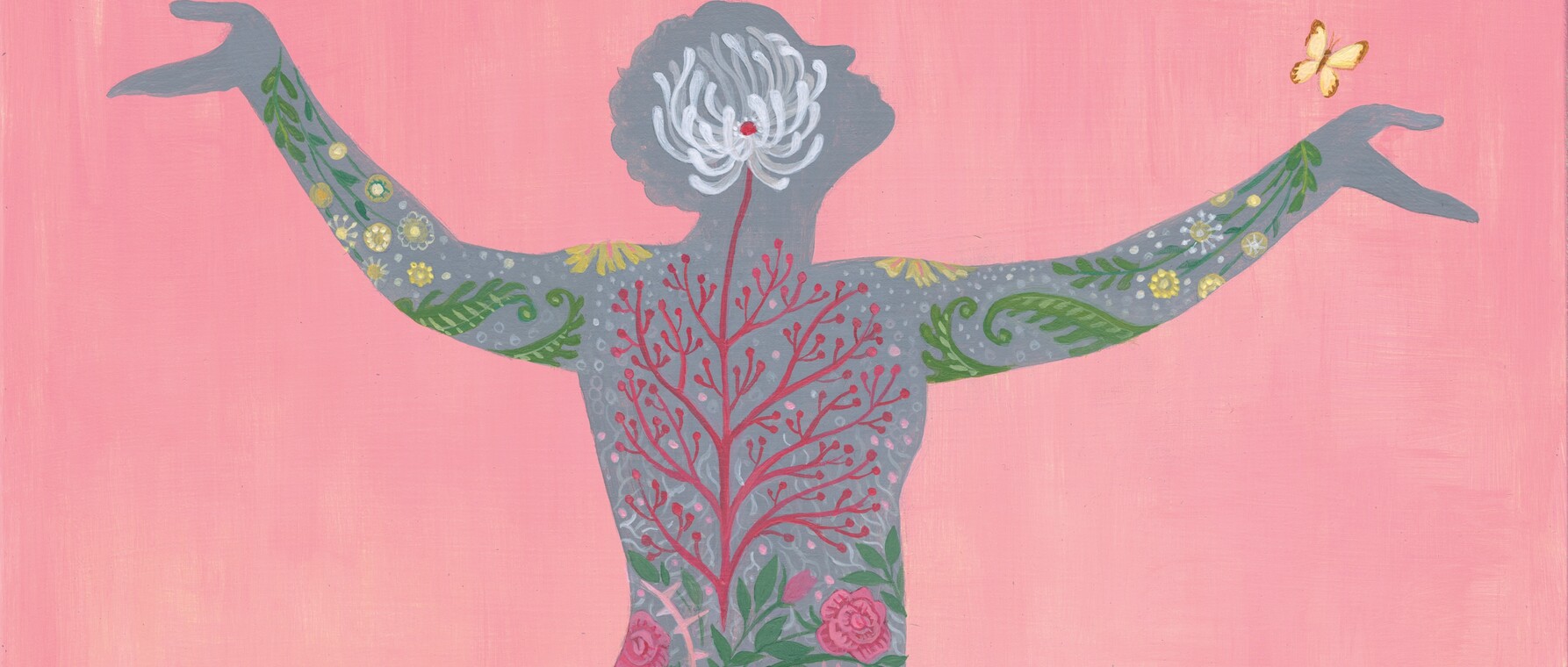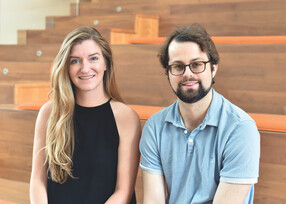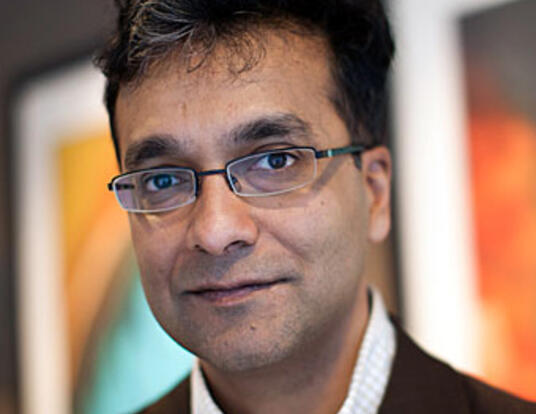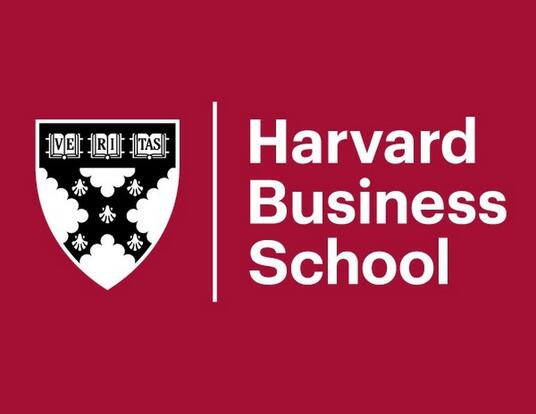Unboxing CRISPR
The new gene-editing tools that are poised to transform humanity

Research at Risk: Since World War II, universities have worked with the federal government to create an innovation ecosystem that has yielded life-changing progress. Now much of that work may be halted as funding is withdrawn. Find out more about the threats to medical, engineering, and scientific research, as well as how Harvard is fighting to preserve this work—and the University's core values.
The world of science fiction is full of cautionary tales that chronicle the consequences of tinkering with the human genome. The movie Gattaca explored the societal effects of genetic choice, imagining a world that had divided humanity into those considered worthy of success and those banned from it because of their “inferior” nature. In Star Trek: Deep Space Nine, it was discovered that a character had undergone a genetic therapy to boost his intelligence, a procedure outlawed when genetic engineering was banned after the Eugenics Wars. These stories and a multitude of others portray the dangers, often deadly, of “playing God” with what nature intended for humans. But in the real world, genetic modification in some form or another has been practiced for millennia, for example, through selective breeding and artificial selection. When Gregor Mendel conducted his experiments on peas more than 150 years ago, he inspired the new field of modern genetics, which led, ultimately, to experiments designed to understand and improve the human genome. Over time, technological advances have challenged society’s belief systems and raised ethical concerns, spurring public debate over ideas that once seemed confined to fiction.
The latest disruptive technology to take aim at our genetic makeup is known as CRISPR: Clustered Regularly Interspaced Short Palindromic Repeats. Discovered in the 1980s and initially dismissed as “junk DNA,” CRISPR has emerged as a tool with the power to eradicate disease, and it is transforming scientific research throughout the world.
Turns out, that “junk” plays a key role in immunity to reinfection, a discovery made through bacterial DNA research. Bacterial DNA is made up of repeats and spacers—the CRISPR—along with a CRISPR-associated, or Cas, enzyme. When a virus invades, Cas enzymes attack and snip off portions of the virus’s genome. These bits are stored in the spacers so that the bacterium “remembers” what attacked it in case the virus returns.
Jennifer Doudna, PhD ’89, at the University of California, Berkeley, and her collaborator Emmanuelle Charpentier, now at the Max Planck Institute for Infection Biology in Berlin, realized that they could capitalize on this defense system and use it as a tool for directed gene editing. Their technique involves combining a guide-RNA produced by CRISPR with a specific enzyme called Cas9 to form a Cas9 complex. The guide-RNA is programmed to find a specific section of DNA, and when it does, Cas9 cuts it out.
But there’s a drawback: Sometimes, the scissors don’t stop and continue along, modifying similar genetic material and causing unintended consequences. Though research to thwart these “off-target effects” is promising, until they can be eradicated, the technique could lead to circumstances that harm patients. And this leads to an important question: What are our ethical responsibilities when new technologies arise and are implemented as quickly as CRISPR?
First Do No Harm
Medical harm is what Jacob Moses, a PhD student in the history of science, focuses his research on. “I’m interested in changing notions of medical harm: what it is, who defines it, and how it has changed over time,” Moses explains. “I’m looking at moments of therapeutic reversal, where something widely practiced and thought to constitute good care comes to be seen as a harmful form of intervention.”

As a Vassar undergraduate studying science, technology, and society, Moses became intrigued by efforts to use genetic technology to modify humans. After graduation, he worked for a bioethics research institute but ultimately decided that he wanted to conduct his own research and develop an identity as a scholar. PhD studies in the history of science seemed a perfect fit.
“In debates about genetics, synthetic biology, or emerging biotechnologies like CRISPR, many of the participants invoke the past,” he says. “By studying these debates, you can find areas of overlap, agreement, or differences that present challenges for ethics and governance. It provides opportunities for us to clarify fundamental issues of how we want to live and what our future will be as a society.”
At first glance, the potential for harm can seem an obvious ethical reason for not using a particular technology. But the reality is far more complicated. “You have cases of patients advocating for acceleration of the availability of certain therapies; HIV/AIDS is the central example of that,” Moses says. “But you have other cases where patient advocates suggest that a practice should be abandoned or curtailed.” He gives an example from his own research into radical mastectomies, once common practice until surgeons came to recognize new harms in light of patient activism and advocacy.
Whether CRISPR as a therapeutic tool faces the same fate is anyone’s guess, as debate over its ethics is ongoing. “I think that people are excited and concerned about CRISPR because of visions of the future informed by science fiction,” Moses says. “Many of the scientists I know are thinking about the possibilities and what the risks and future harms could be, too.”
Lucky Number 13
The desire to reduce harm is what fuels research undertaken by Catherine Freije, PhD student in virology, and Cameron Myhrvold, PhD ’16. Based in the lab of Pardis Sabeti, professor of organismic and evolutionary biology and a leader in the Broad Institute’s Infectious Disease and Microbiome Program, they use CRISPR technology, but one that takes advantage of a different protein. “There are many Cas proteins out there,” Myhrvold explains. “We work mostly with Cas13, which is different from Cas9 in that it targets RNA instead of DNA.”

Cas13 was identified about two years ago, and its discovery has enabled Freije and Myhrvold to target infectious viruses that use RNA as their genetic material, as well as develop diagnostic tools for viruses. Cas13 operates differently than Cas9 and many other proteins that have been discovered. “We like to think of CRISPR as a toolbox with different tools for different applications,” says Freije. “Cas13 is another tool in that box.”
And that toolbox is a game changer. “It’s revolutionizing research in many ways,” says Myhrvold.
Freije and Myhrvold decided to start with Zika and dengue, two viruses that are often found in the same region and are notoriously difficult to diagnose. Using Cas13, they and their colleagues developed a diagnostic platform that correctly identified when the Zika or dengue viruses were present in a patient sample, with minimal sample processing. After they published their results in Science, they received a nod from Forbes magazine, which named them one of their 30 under 30 for 2019.
While Freije and Myhrvold initially worked on developing a diagnostic tool to inform treatment, the next step is to target and destroy a virus. “The ultimate goal would be to develop a drug with Cas13 designed to cure a disease caused by a certain pathogen, and allow a patient to recover faster,” says Freije. “But we’re far away from that at the moment.”
Floating All Boats
Harm isn’t the only ethical consideration in the conversation about CRISPR and other forms of genetic modification. For some, new technologies provide altruistic opportunities. “I believe we have an ethical obligation to maximize benefits and minimize harm,” says George Church, PhD ’84, professor of genetics, Blavatnik Institute, Harvard Medical School. “If we have an opportunity to eliminate infectious and genetic diseases, or some subset of them—even one of them—then we should pursue it.”
I believe we have an ethical obligation to maximize benefits and minimize harm.
–George Church
Church is a world-renowned geneticist whose research runs the gamut from age reversal and disease reduction to wooly mammoth resurrection and genetic modification for space travel. Each project is evaluated for potential risks and benefits, with an eye to risk reduction. And while some may raise concerns about the dangers of augmenting humans, Church believes that the practice should be pursued—but fairly.

“I don’t think there’s an ethics of augmentation, other than it should be equitably distributed,” he says. “It should be inexpensive. It should be safe and effective, both short and long term.” Church points out that CRISPR isn’t the first method to precisely edit the genome but rather is simply the latest in a series of technologies that have existed and been debated since the 1980s. The game-changing aspect of genome editing is a possible 10,000-fold improvement in the number of edits that can be made at high efficiency. Multiplexing, or making multiple edits at once, is something that Church has investigated for years, and this type of editing could completely eradicate the potential for certain diseases. His lab recently announced a breakthrough in multiplexing, where 13,200 edits were made in the genome of a single cell.
This breakthrough hints at the possibility of improving human health to a state where diseases—at least those encoded in our genes—could be eliminated. As a stopgap against the dystopian futures prophesied in fiction, Church believes that we should ensure that such a technology not be limited to the wealthiest. “One of my team’s obsessions is reducing the price of technologies,” he says. “I’m not particularly motivated by helping the rich get yet another advantage, fair or unfair. I’m motivated by floating all boats.”
A Better Future
It is hard to find a positive representation of genetic modification in science fiction. All stories tease a benefit that is stripped away, replaced by a doom-filled future. But in a world where debate is informed by scholars like Moses, where research by scientists like Freije and Myhrvold could limit or eliminate harm for patients ravaged by viruses, a more positive future of the kind Church works toward seems more likely.
As a comparison, Church points to the development of life-saving vaccines for smallpox and polio and notes that the diseases’ extinction will be completely egalitarian because everyone in the world will benefit. “They won’t have to get the government to pay a penny for them to get vaccinated because the world is free of it,” he says. “That inspires me.”
Illustration by Jody Hewgill, Photos by John Soares, Michael Butts, and Stephanie Mitchell
Get the Latest Updates
Join Our Newsletter
Subscribe to Colloquy Podcast
Simplecast





